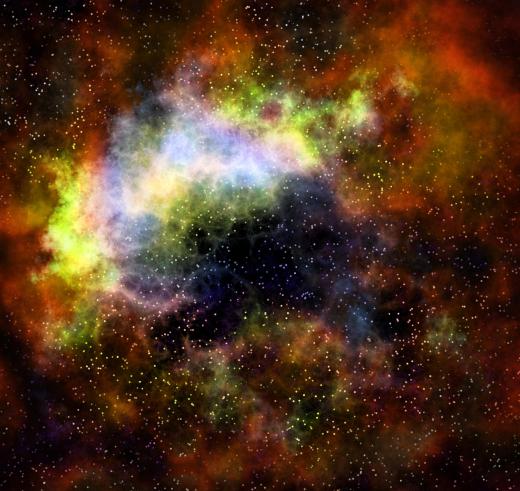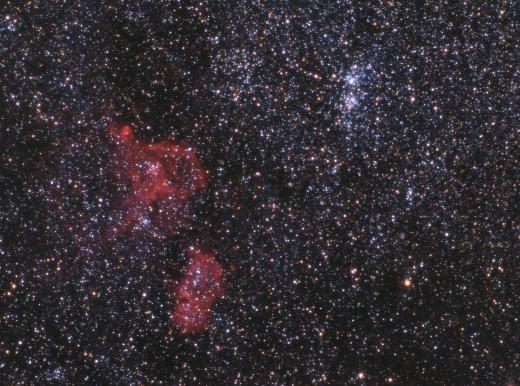What is a Stellar Nursery?
 Michael Anissimov
Michael Anissimov
A “stellar nursery” is romantic way of referring to a molecular cloud in the process of forming new stars. A molecular cloud is a region of space dense enough with hydrogen atoms that molecules, most commonly H2, or diatomic hydrogen, can form. Molecular clouds may be giant, with 1000 to 100,000 times the mass of the Sun, or smaller, less than a few hundred times the mass of the Sun. These are called giant molecular clouds and small molecular clouds respectively.
As far as we know, star formation occurs exclusively within these molecular clouds, hence the moniker “stellar nursery.” For a molecular cloud to be a stellar nursery, several conditions must be meant. First, the molecular cloud must have enough pockets of sufficient density (“molecular cores”) to provide the raw material to produce stars. Second, the molecular cloud must be subject to agitating forces, such as nearby large stars or supernovae. When a portion of a molecular cloud is lit and ionized by the radiation of a nearby massive star, it is called an HII region.

Because HII regions are the portions of molecular clouds being most vigorously agitated by outside sources, they are the most likely place to be a stellar nursery. Outside influences are necessary to create a star, because otherwise, a critical density is rarely achieved in a molecular cloud. If density is not sufficient, then gas particles in the cloud just keep orbiting each other forever. Due to an outside influence, such as a supernova shock wave, molecular clouds can condense in localized regions, becoming what is called Bok globules.

Bok globules are very dense cores found in stellar nurseries. Typically, they contain about 10-50 solar masses worth of material in an area about a light year across. Bok globules are notable in astronomy because they contain a variety of molecules not usually found in typical sparse interstellar space: molecular hydrogen, carbon oxides, helium, and silicate dust. Sooner or later, it is thought that many Bok globules collapse to form stars, or, more frequently, binary star systems or star clusters. Our Sun is actually thought to be an anomaly in that it has no binary pair.
Stellar nurseries are eventually destroyed by the stars which create them. The new stars either suck up much of the local material, or blow it away via solar wind. Eventually, these newborn stars might explode in a supernova, triggering the formation of other stars in nearby stellar nurseries.
AS FEATURED ON:
AS FEATURED ON:












Discussion Comments
Stars can only be made in stellar nurseries. Once a star is made in a stellar nursery, what happens to it? Does it just stay there until the stellar nursery dies, or can it somehow get distributed into the universe?
So I’m guessing that we can have molecular clouds which never form stellar nurseries.
Is this correct? The way that I read the article is simply that these molecular clouds can form stellar nurseries, but all of the conditions within the cloud (density, etc.) must be optimal.
Assuming that I read this and understood it correctly, what happens to the clouds which never do form stars? Are they eaten by a 'hypergiant?'
This idea of stellar nurseries is incredibly intriguing! I love the name!
I also heard just a week or so ago that we are finding a large population of rogue planets; there is something like fifty or so percent more of them than we ever anticipated although we did know that some of them existed.
(All that a rogue planet is is a planet which does not have a parent sun which it orbits around. Like the earth orbits around our sun, and they are attached to each other. These planets do not have that.)
It is difficult to pinpoint a good estimate, even in our own solar system, because we can't really see them in a space telescope.
It is absolutely amazing what all is out there that we have yet to discover and define!
Post your comments